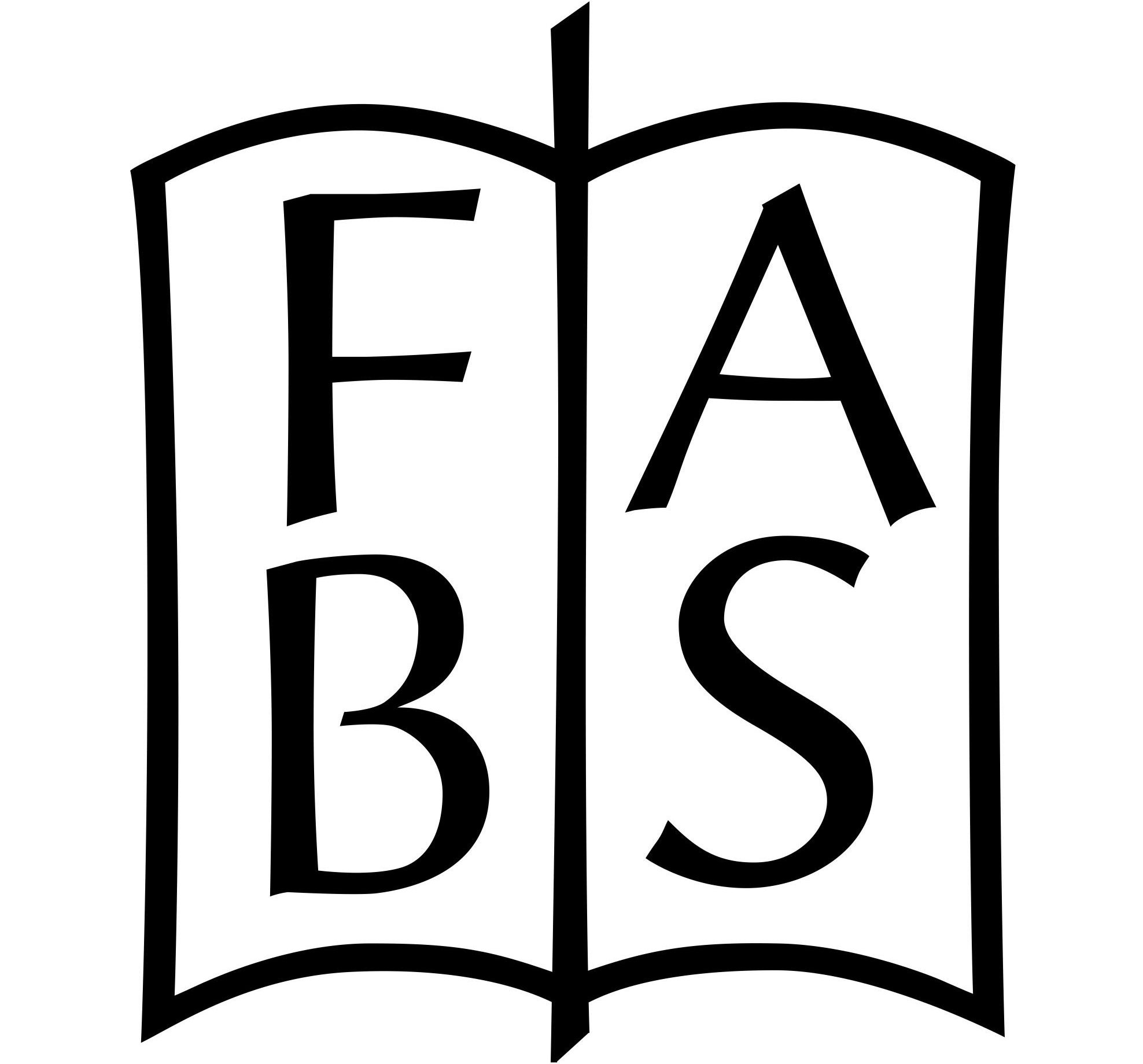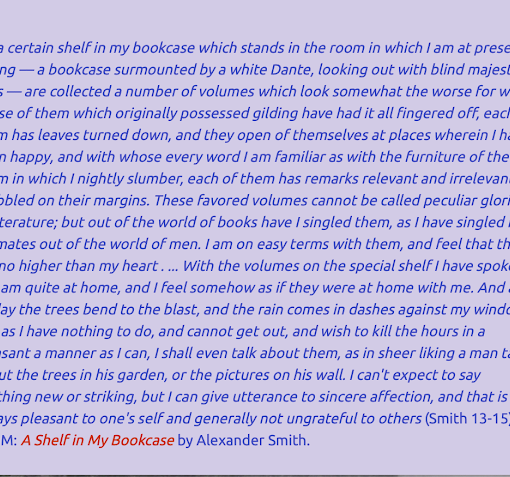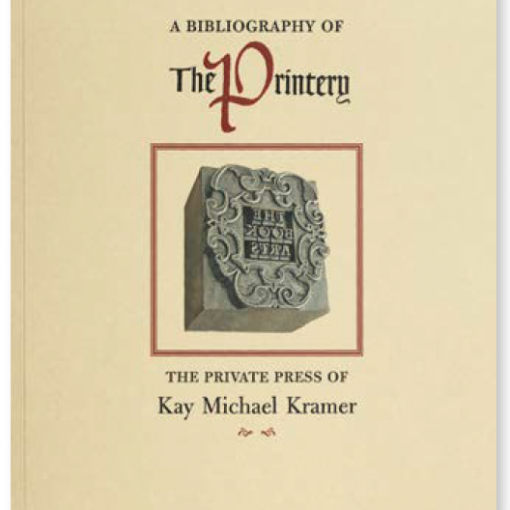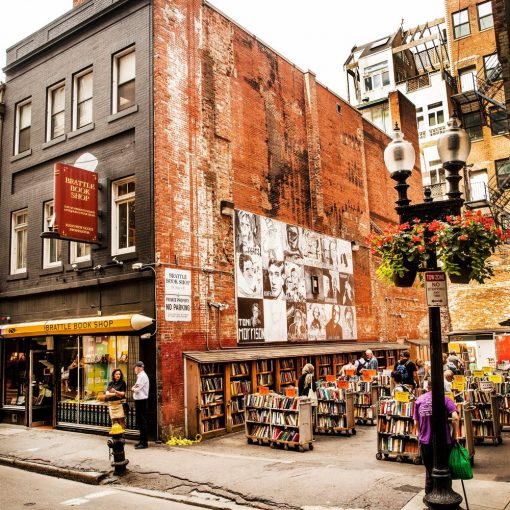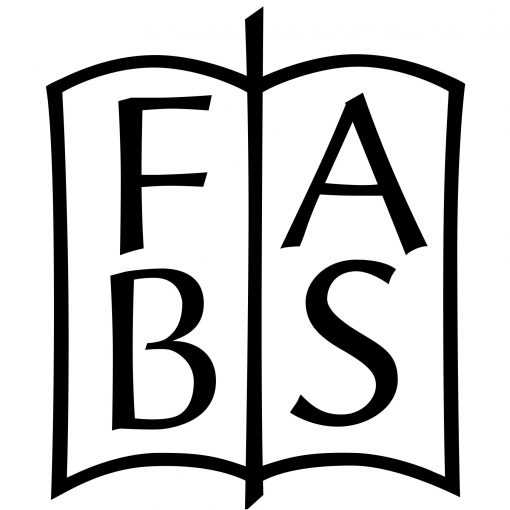by Mark J. Ferson
(This article is based on a presentation by Dr. Mark Ferson to the Book Collectors’ Society of Australia via Zoom on 4 March 2023, and first appeared in Biblionews 419, Sept. 2023. FABS thanks Dr. Ferson and the BCSA for permission to reproduce it here.)
My talk today is on manuscript bookplates and is an updated version of a paper I presented at last year’s Bibliographical Society of Australia and New Zealand Conference, with the theme ‘Embellished’. Bookplates are labels pasted inside a book to mark ownership. They are produced in multiples, sometimes in the thousands, to suit the size of the library. An uncertain and poorly documented category are those sometimes referred to as manuscript, hand-painted or hand-drawn ex libris or bookplates. Articles have appeared rarely in the Journal of the Bookplate Society (UK) and in the Newsletter of the New Australian Bookplate Society. The bookplates themselves are hard to find, both physically and virtually (that is, online).
I thought the BSANZ Conference might expect a bit of academic rigour – in the end I don’t think it did – but I felt the need to apply a bit of an academic approach. This prompted me to start working on a framework for categorising and describing bookplates, something that has not been covered at all in any literature that I have seen. I don’t mean the sort of categorisation that English gentlemen and ladies – the ones who first had the idea of book-plate collecting – thought appropriate. They went for categories such as royalty, aristocracy, ecclesiastic; or by era/style, e.g. Chippendale, bookpile; or more recently, by owner type: literary figures, artists, movie stars etc. So, I have been exploring and musing about ways to classify books by their purpose (for those using them), by their value (to those studying them), and also by their form, and here I will focus on the forms of manuscript book-plates, starting with the plainest and ending with the ‘prettiest’.
The first ‘category’ I call the ‘simple’ or ‘rough’ form, exemplified by Fig. 1, “Nancy Holloway | Christmas 1935”, written in ink inside a hand-drawn paper scroll; this was found in H. A. Vachell, John Verney (1933), originally bought from Dymocks in Sydney. If you do not want to call this a bookplate no one can really argue, and I agree that at some point we have to draw a line between an inscribed name and what might be more, i.e. a manuscript book-plate. This uncertainty may be more a problem for bookplate collectors, because for those focused on the book itself as the primary concern, how one labels different forms of marks of provenance would seem to be less of an issue, except perhaps when it comes to trying to label them for the purpose of cataloguing and retrieval.
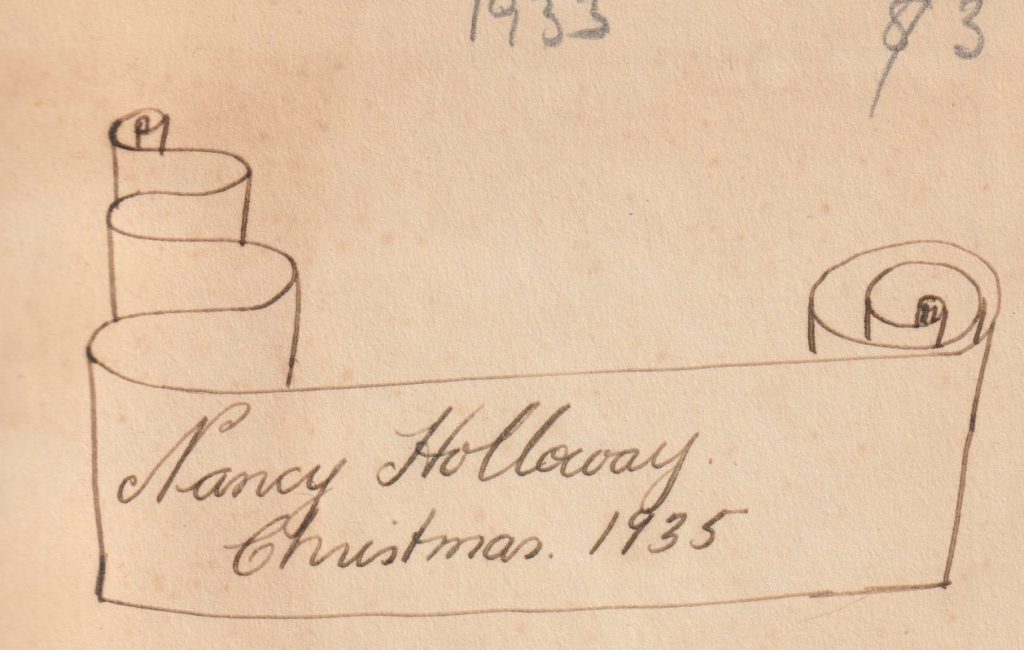
Examples which I have called ‘inscriptions with something extra’ include an inscription (Fig. 2) “To Michael | From Godfather Tiley | Xmas 1949”, decorated with a drawing of a passenger liner and ‘1950’ appearing on the horizon, in Monster book for boys (London: Dean & Son, ND); and one by the owner “G J Browne | 1959”, enhanced by a sketch of a boomerang (Fig. 3), which to my mind is the pictorial representation of the traditional bookplate text entreating any borrower to return the book home after use.
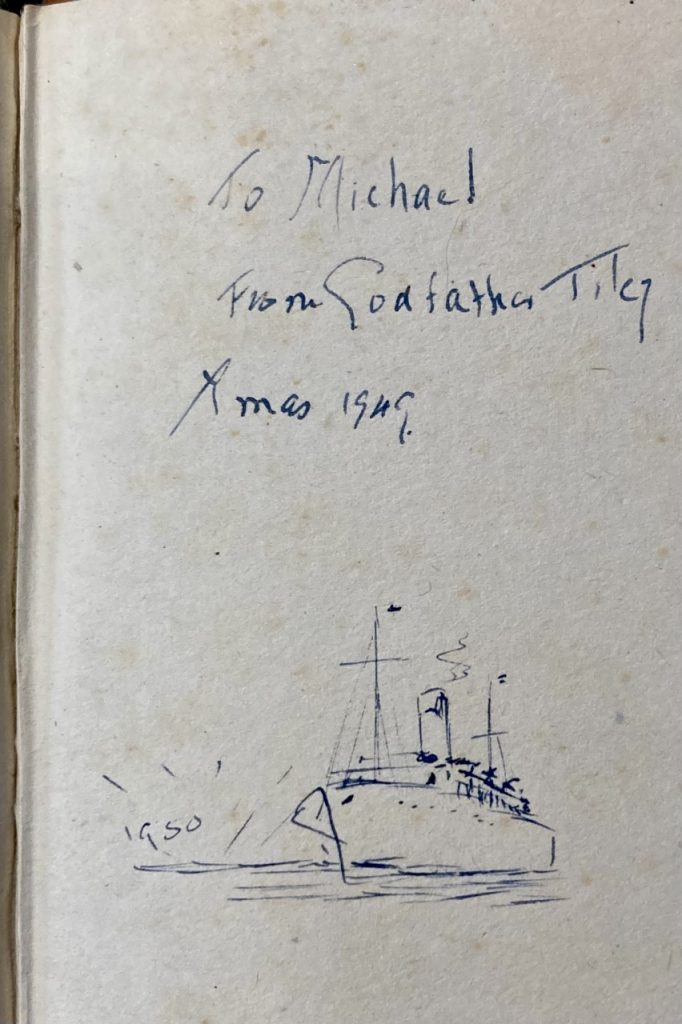
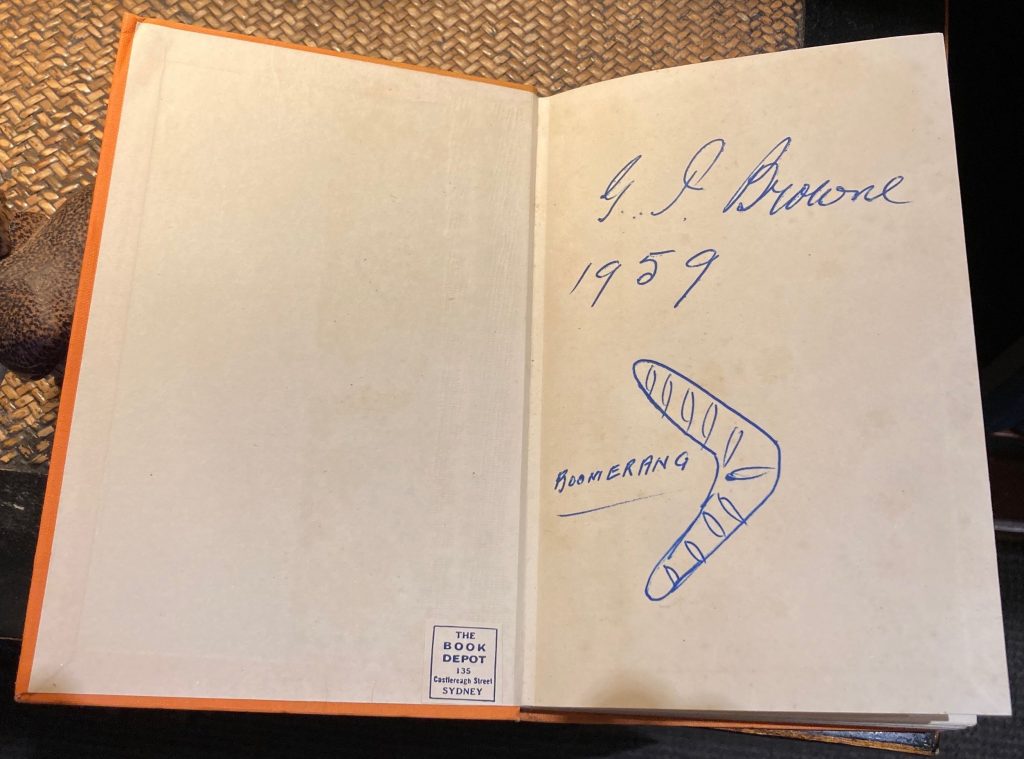
Some manuscript bookplates can be written (or even typed) onto a label which is then pasted into the book. Some might say they are ugly but, in their ordinariness, I find them absolutely tantalising as I start to imagine the sort of person who owned each of these volumes. Some are handwritten, as “Hy. A. Stokes | March 1st 1878” in John Bunyan, The holy war, made by Shaddai upon Diobolus (London: RTS, ND) or “N Lockwood”, with end-paper faintly inscribed “N. Lockwood, Mooroopna Hospital, June 1918”, in G. J. Saunders, Modern methods in nursing (Philadelphia: Saunders, 1917). Others are rather quaintly typed: “J. A. Clendenning, | Scientific Investigation Bureau, | C. I. Branch | SYDNEY” in New course dictation studies (Melbourne: Pitman, ND), a shorthand instruction book; or (Fig. 4) “This book is the property of | W.F. HAMILTON | Plea se [sic] do not remove or displace” in Reginald Dingle, Russia’s work in France (London: Robert Hale, 1938).
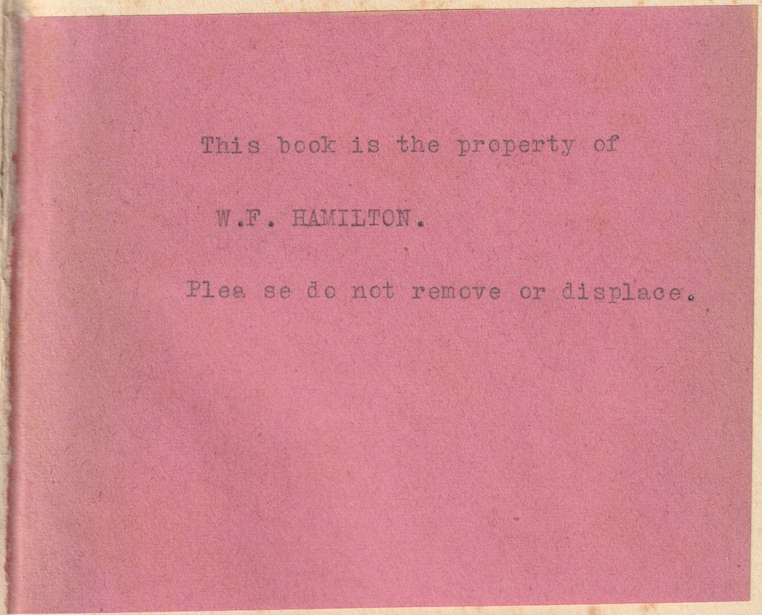
And now we are coming closer to what are, unarguably, bookplates: hand-drawn or painted pictorial designs, such as those for and most likely by Erica Plavin (Fig. 5) in Gilbert’s Savoy operas (Macmillan, 1937), with A&R label, maybe depicting a character from The Mikado such as Yum Yum, or Brett Hilder in R Baden Powell, Rovering to success (London: Jenkins, ND), or the very professional looking ink design (Fig. 6) on the front free endpaper ‘Margot Hentze Her Book’ in Mary Webb, The house in Dormer Forest (Cape, 1929 repr.). And incidentally, all but the Hentze design are painted onto pieces of paper which are then stuck into the book, so are truly labels. A related item is the hand-painted endpaper complementing a prize bookplate for Tony Rae (Fig. 7).
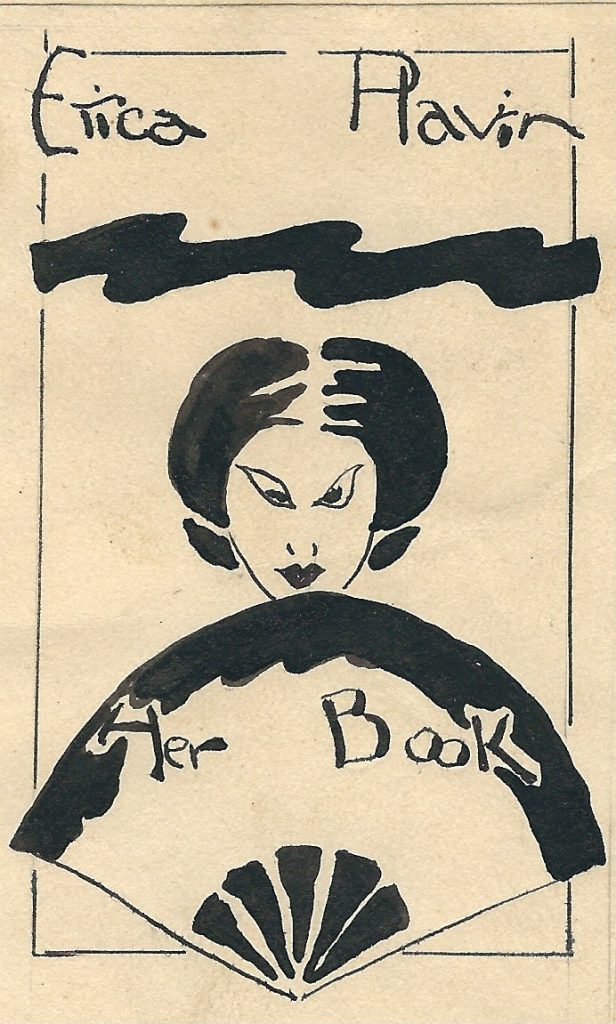
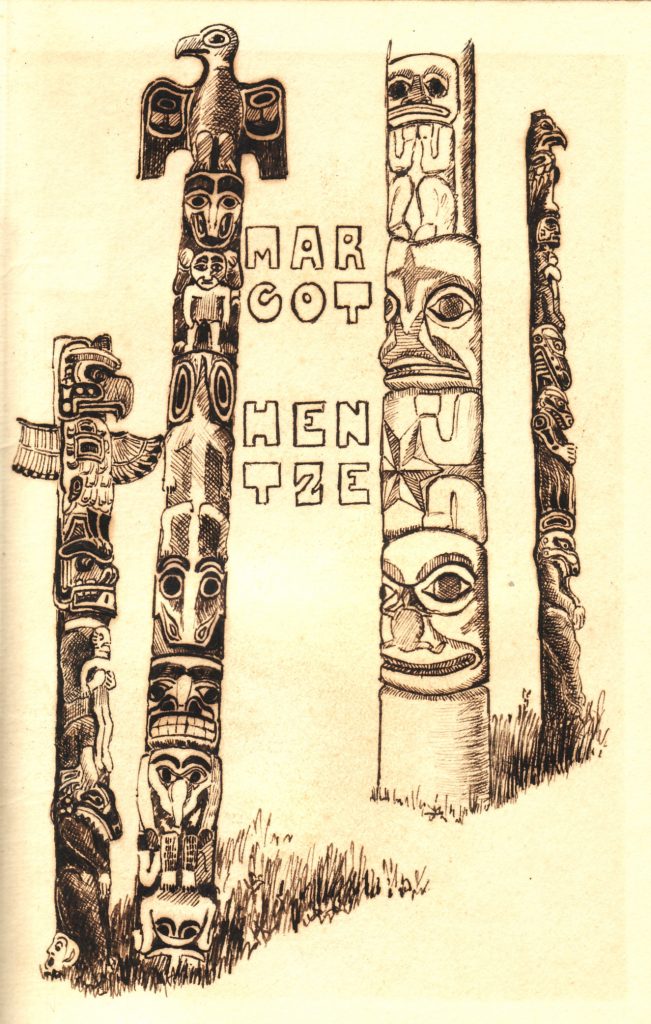
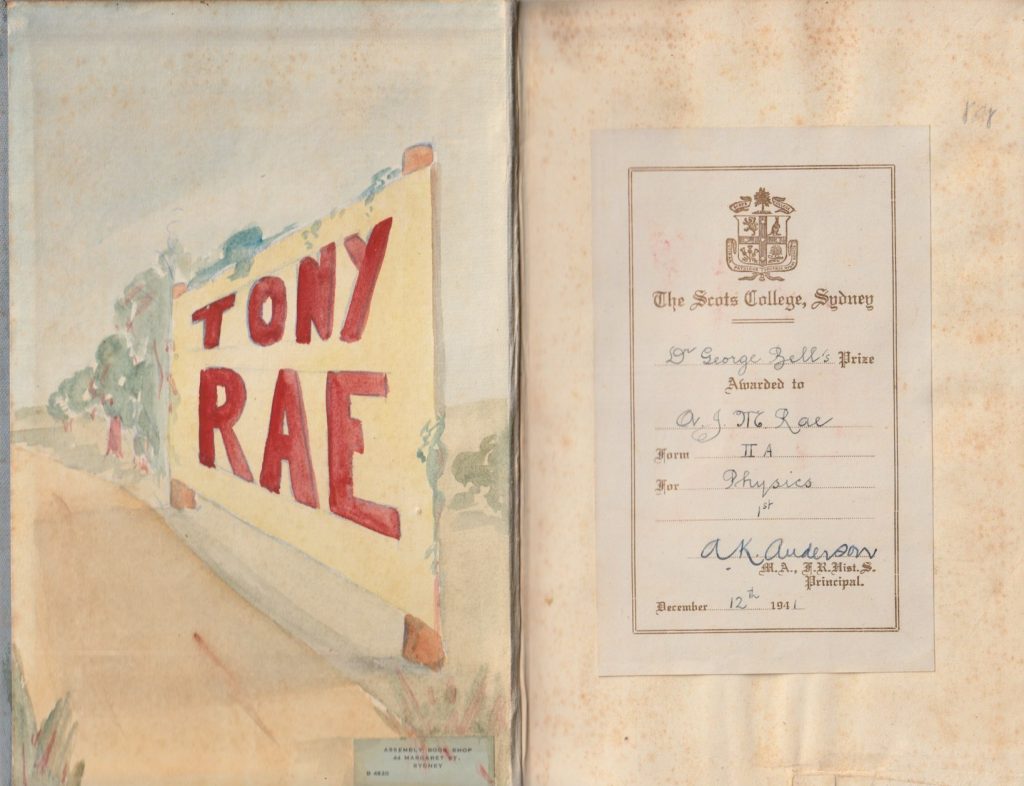
They may decorate a book given as a gift, such as those lettered “Ex Libris | G. I. Gillies | from | Douglas | and | David | 23rd September 1953” (Fig. 8), in Australian poetry 1953 (A&R, 1953) or for Juen Winley (Fig. 9) in Mildred Cable & Francesca French, Something happened (London: H&S, 1935) with seller’s label for the Book Depot, Sydney.
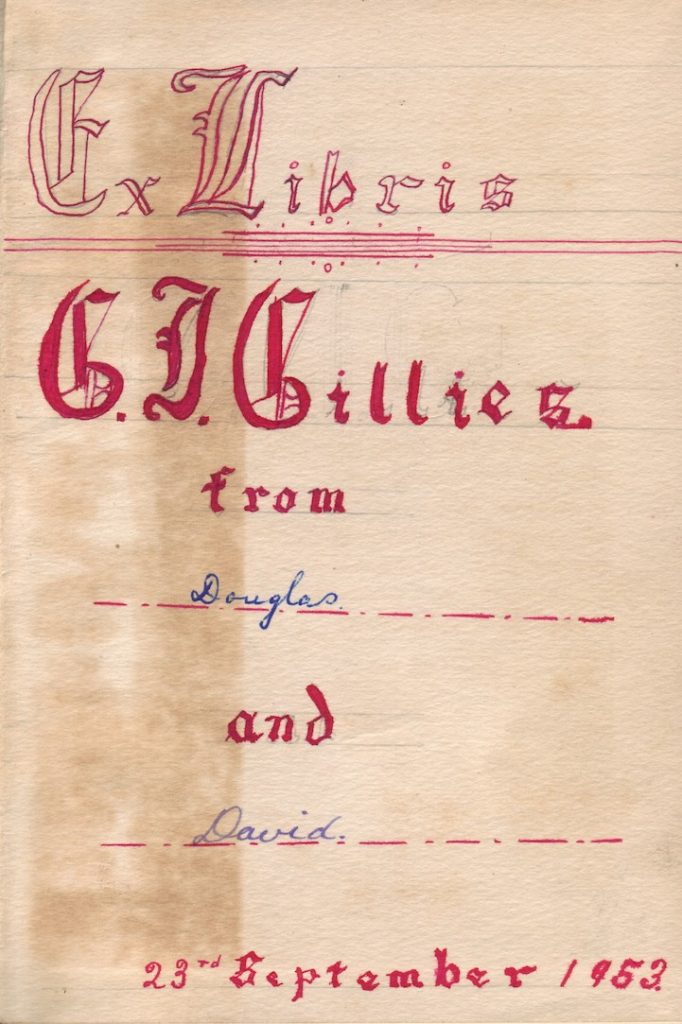
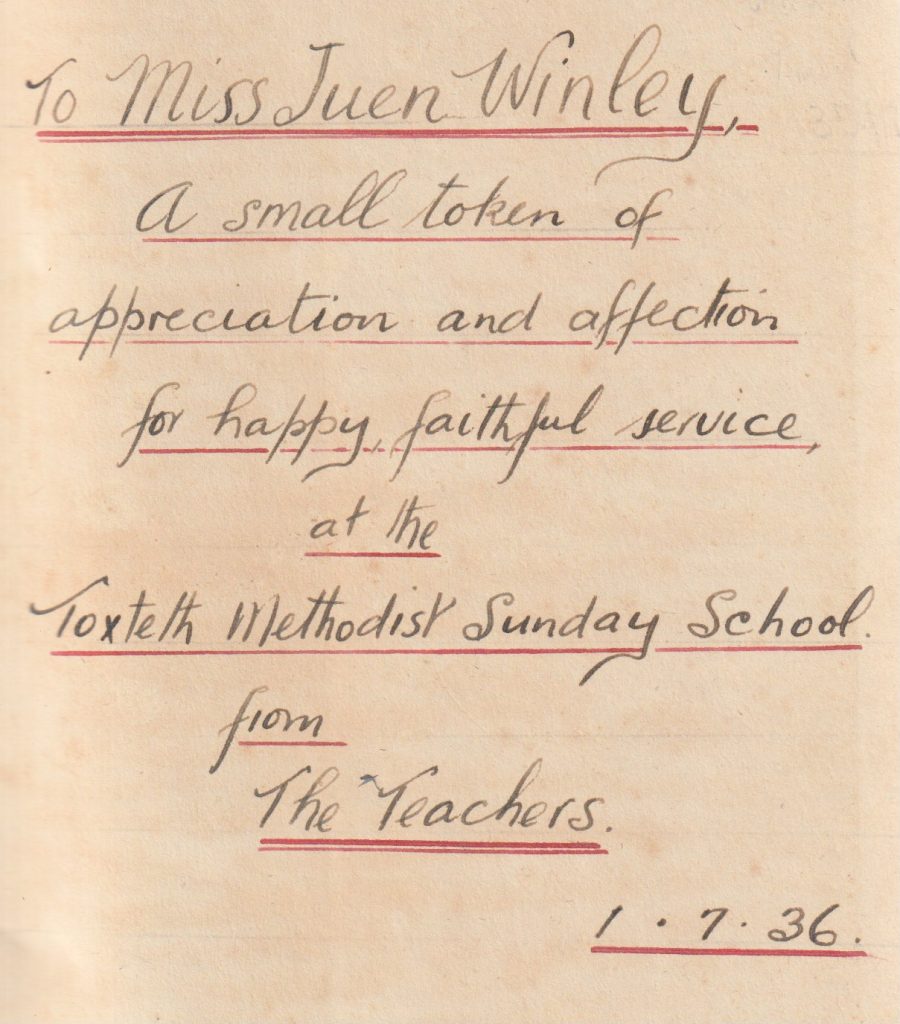
One of my favourite gift inscriptions is (Fig. 10) “To Sydney from V. A. Q. | Xmas ’05” on the front free endpaper of a copy of A. L. Baldry, Velasquez (Newnes’ Art Library, ND). I know this inscription embellished with a charming drawing is a memento of an already, or perhaps soon to be, intimate, relationship in that centre of the Sydney art world, Julian Ashton’s Art School, because I have worked out who Sydney and V. A. Q. are. In 1902, Sydney Ure Smith began five years of study in Julian Ashton’s art classes (the Sydney Art School from 1906). In 1903 he published the students’ magazine, The Palette, which included illustrations by Viola Austral Quaife, grand-daughter of Rev. Barzillai Quaife, whom he married at Paddington on 6 May 1909. Over the next four decades, Ure Smith became the pre-eminent personality in the Sydney art world encompassing his commercial art studio, Smith & Julius, presidency of the Society of Artists, founding editor of Art in Australia and many other artistic ventures. Viola Quaife won a number a student awards at Julian Ashton’s, and her watercolours are held in Australian private and public collections.
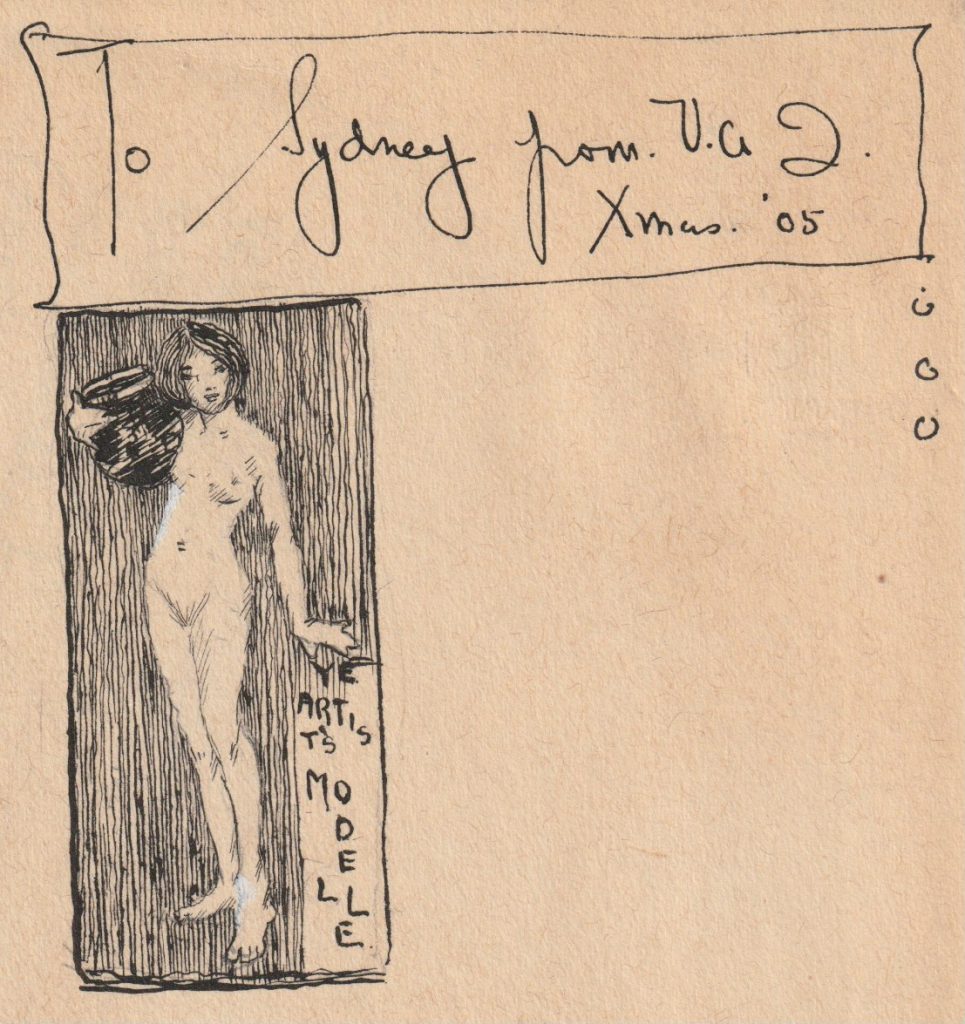
Prize or premium plates (Fig. 11) are another form of hand-written book-plate, and they vary in calligraphic skill and aesthetic quality from plain to superb. At the December 2014 BCSA Show and Tell I presented a series of beautiful watercolour or ink lettered prize bookplates for two gifted students who attended Ascham School, a private boarding school for girls founded in 1886 and located in Sydney’s east. They were reproduced in monochrome in Biblionews 388 (December 2015) but in colour reproductions their beauty and brilliancy is still evident over 100 years after they were painted. In 1916 Dulcie Bull won two prizes: the Ascham Old Girls’ Union (Fig. 12) appears in The Works of Alfred Lord Tennyson (Macmillan, 1911) and the Marie Willis Prize in T Hutchinson, The poems of William Wordsworth (Henry Frowde, 1911). In both 1919 and 1920, Lois Linsley, the first Ascham girl to sit the NSW School Leaving Certificate, won the Amy Molineaux Prize (Fig. 13). The design for the 1920 prize is in black and white and was, unusually, signed, in this case by Madeleine E King, who among other art-related activities gave drawing and design classes at the school in 1918.
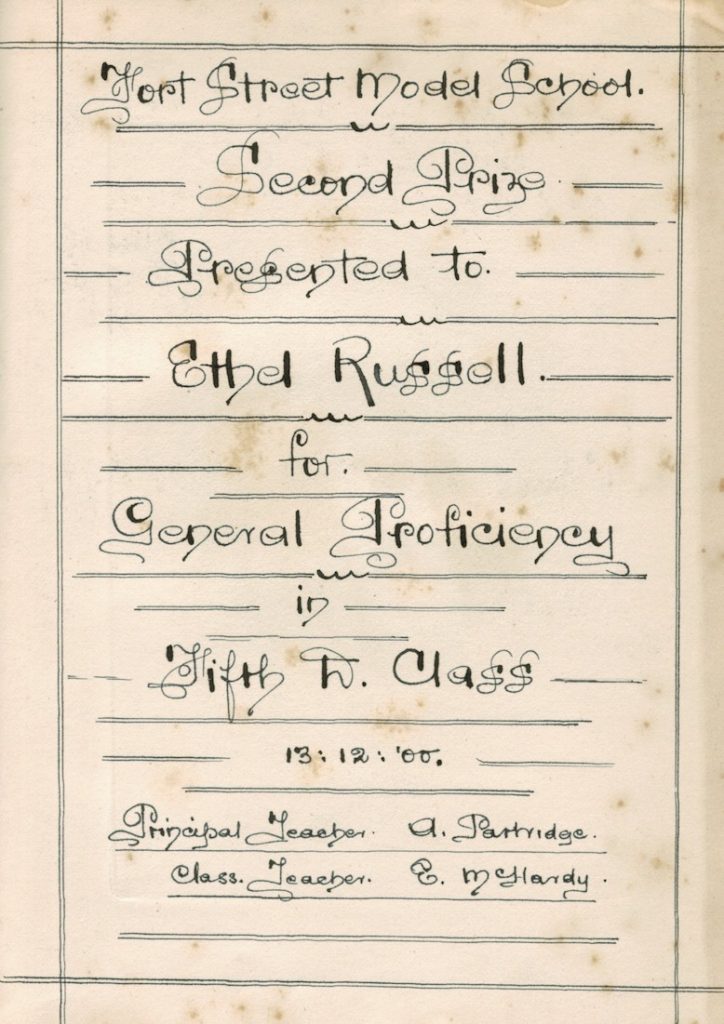
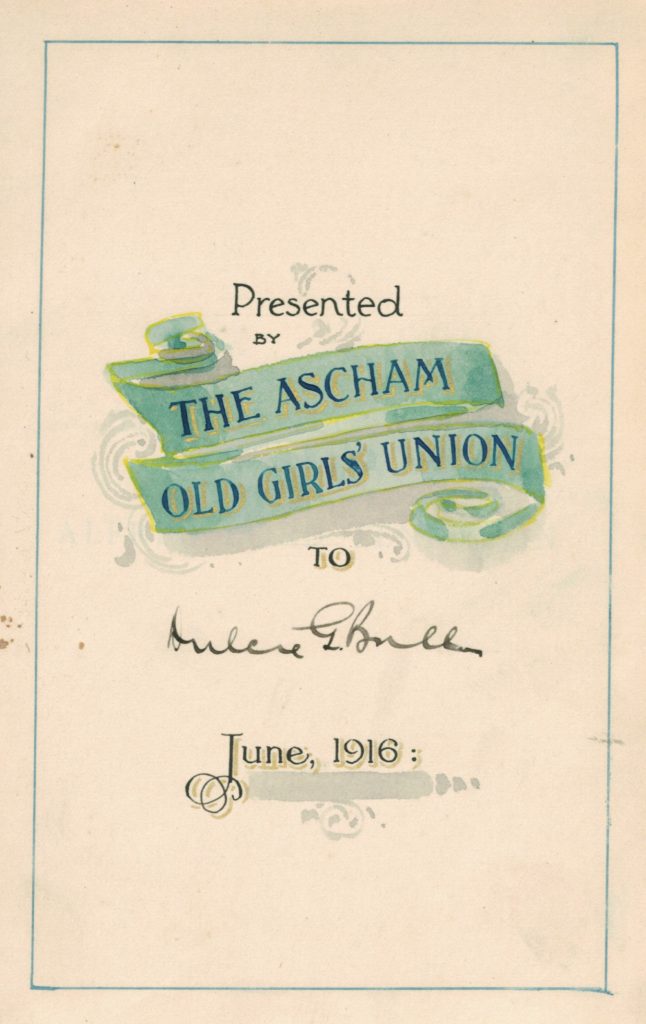
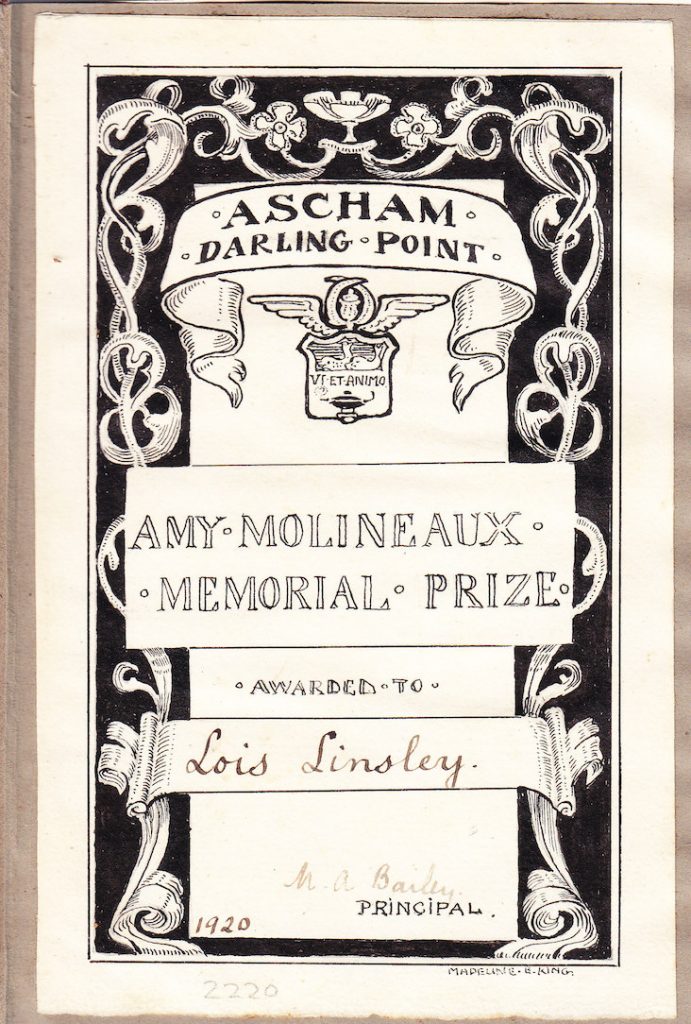
In conclusion, it should be apparent that manuscript or hand-painted bookplates are rare, unique and hard to find. They come in many forms but fulfill the usual purposes of bookplates, to mark gifts, prizes and cherished books. There is no hard-and-fast definition and some might be just referred to as inscriptions. Whilst many are ‘plain and simple’, some are of great quality, beauty and impact and are sublime embellishments to books.
